You go to the polls. You vote. You go home. But wait—how did you vote? Did you fill in bubble https://abs.twimg.com/emoji/v2/... draggable="false" alt="✏️" title="Pencil" aria-label="Emoji: Pencil">? Tap a touchscreen
https://abs.twimg.com/emoji/v2/... draggable="false" alt="✏️" title="Pencil" aria-label="Emoji: Pencil">? Tap a touchscreen  https://abs.twimg.com/emoji/v2/... draggable="false" alt="🖐️" title="Raised hand with fingers splayed" aria-label="Emoji: Raised hand with fingers splayed">? Pull a lever
https://abs.twimg.com/emoji/v2/... draggable="false" alt="🖐️" title="Raised hand with fingers splayed" aria-label="Emoji: Raised hand with fingers splayed">? Pull a lever  https://abs.twimg.com/emoji/v2/... draggable="false" alt="⚙️" title="Gear" aria-label="Emoji: Gear">?
https://abs.twimg.com/emoji/v2/... draggable="false" alt="⚙️" title="Gear" aria-label="Emoji: Gear">?
Voting machines usually don’t get a lot of attention, but they’re a vital part of what makes our democracy work. #VoteHistory #ElectionDay
Voting machines usually don’t get a lot of attention, but they’re a vital part of what makes our democracy work. #VoteHistory #ElectionDay
Let& #39;s start with the most basic of voting machines: a ballot box.  https://abs.twimg.com/emoji/v2/... draggable="false" alt="🗳️" title="Ballot box with ballot" aria-label="Emoji: Ballot box with ballot">
https://abs.twimg.com/emoji/v2/... draggable="false" alt="🗳️" title="Ballot box with ballot" aria-label="Emoji: Ballot box with ballot">
A ballot box is just...well, a box where voters& #39; ballots can be stored until they& #39;re counted. Ballot boxes can come in all sorts of shapes and sizes; our collections include quite a few. #VoteHistory
A ballot box is just...well, a box where voters& #39; ballots can be stored until they& #39;re counted. Ballot boxes can come in all sorts of shapes and sizes; our collections include quite a few. #VoteHistory
The glass ballot box is one of the most iconic designs for voting machines in U.S. history. Widely adopted in the late 1800s, the glass ballot box became a symbol of democratic self-government. Some political parties even made it part of their symbol on ballots. #VoteHistory
Supporters of the glass ballot box believed that its transparency would prevent misconduct at the polls. Many—like the illustrators for Puck magazine in 1881—hoped the boxes would break the political power of political "machines" like New York& #39;s Tammany Hall. #VoteHistory
Others were more skeptical about the effect glass ballot boxes would have on elections. This 1874 illustration from Harper& #39;s Weekly reminded readers that new ballot boxes wouldn& #39;t protect voters& #39; from intimidation and violence at the polls. #VoteHistory [ https://abs.twimg.com/emoji/v2/... draggable="false" alt="📷" title="Camera" aria-label="Emoji: Camera">: @librarycongress ]
https://abs.twimg.com/emoji/v2/... draggable="false" alt="📷" title="Camera" aria-label="Emoji: Camera">: @librarycongress ]
Adding transparent glass wasn& #39;t the only way inventors tried to improve voting machines in the 1800s. The Acme Ballot Box was one of many voting machines to include an internal cylinder “roller.” Once submitted, ballots couldn& #39;t be tampered with (or seen). #VoteHistory
In the early 1900s, many states and territories began replacing older voting technologies with a new invention: the gear-and-lever voting machine. Instead of filling out a paper ballot, voters cast their vote by pulling levers for their chosen candidates or party. #VoteHistory
Instructional devices like this gave voters an opportunity to practice using a gear-and-lever machine before voting. Want to practice before #ElectionDay? Your local election office might list the kinds of machines your district uses: http://s.si.edu/election-office ">https://s.si.edu/election-... #VoteHistory #Civics
By 1960, approximately half of all ballots in the U.S. were cast on gear-and-lever voting machines  https://abs.twimg.com/emoji/v2/... draggable="false" alt="⚙️" title="Gear" aria-label="Emoji: Gear">. Political parties encouraged Americans to "pull the lever" for their candidates on election day. Did you ever use one? #VoteHistory
https://abs.twimg.com/emoji/v2/... draggable="false" alt="⚙️" title="Gear" aria-label="Emoji: Gear">. Political parties encouraged Americans to "pull the lever" for their candidates on election day. Did you ever use one? #VoteHistory
The gear-and-lever voting machine& #39;s reign did not last forever. Starting in the 1960s, a new, stylus-and-paper-based technology—the Votomatic vote recorder—challenged and eventually eclipsed the older machine. #VoteHistory
On a vote recorder machine, voters insert a machine-readable ballot card into a frame and then use a stylus to punch out "chads"—tiny pieces of paper—on the card. Election officials collect the card and tally the vote later, usually with the help of a computer  https://abs.twimg.com/emoji/v2/... draggable="false" alt="🖥️" title="Desktop computer" aria-label="Emoji: Desktop computer">. #VoteHistory
https://abs.twimg.com/emoji/v2/... draggable="false" alt="🖥️" title="Desktop computer" aria-label="Emoji: Desktop computer">. #VoteHistory
Remember "hanging chads"? In 2000, the recount of ballots in Florida during a close presidential election fueled a debate about the reliability of punch card ballots. Our curators were there to collect a vote recorder and other objects: http://s.si.edu/voting-machines ">https://s.si.edu/voting-ma... #VoteHistory
In 2002, Congress passed the Help America Vote Act. One of its provisions? Upgrading voting machines. Since then, many states have purchased touch-screen voting machines or "fill-in-the-bubble" optical ballot readers. You may see them tomorrow on #ElectionDay! #VoteHistory
Enjoy learning #VoteHistory https://abs.twimg.com/emoji/v2/... draggable="false" alt="🗳️" title="Ballot box with ballot" aria-label="Emoji: Ballot box with ballot">? Our exhibition, American Democracy, explores fundamental questions about our nation& #39;s politics, including: How should we govern? Who can vote? How do we protest? Who can be a citizen? What are our rights & responsibilities?: http://s.si.edu/2ON2b8s ">https://s.si.edu/2ON2b8s&q...
https://abs.twimg.com/emoji/v2/... draggable="false" alt="🗳️" title="Ballot box with ballot" aria-label="Emoji: Ballot box with ballot">? Our exhibition, American Democracy, explores fundamental questions about our nation& #39;s politics, including: How should we govern? Who can vote? How do we protest? Who can be a citizen? What are our rights & responsibilities?: http://s.si.edu/2ON2b8s ">https://s.si.edu/2ON2b8s&q...

 Read on Twitter
Read on Twitter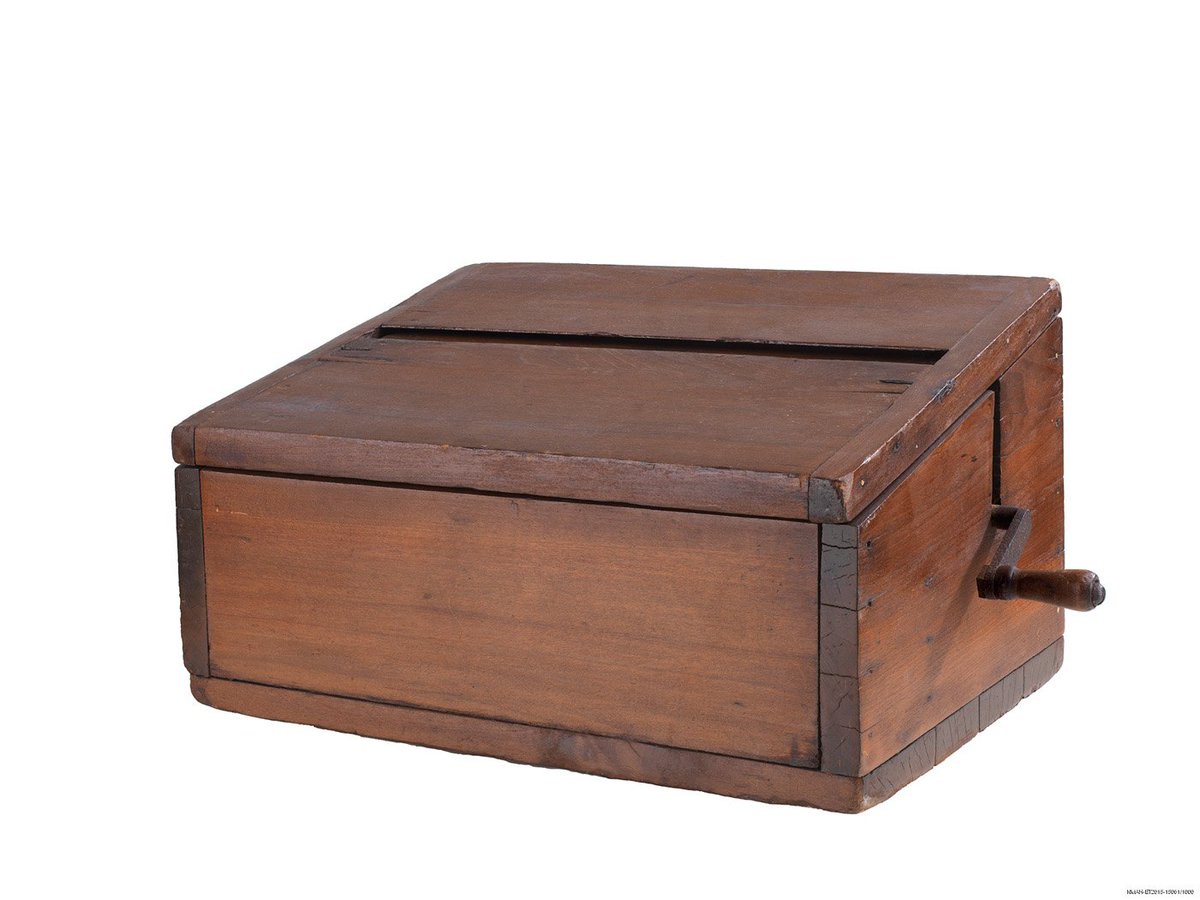 A ballot box is just...well, a box where voters& #39; ballots can be stored until they& #39;re counted. Ballot boxes can come in all sorts of shapes and sizes; our collections include quite a few. #VoteHistory" title="Let& #39;s start with the most basic of voting machines: a ballot box. https://abs.twimg.com/emoji/v2/... draggable="false" alt="🗳️" title="Ballot box with ballot" aria-label="Emoji: Ballot box with ballot"> A ballot box is just...well, a box where voters& #39; ballots can be stored until they& #39;re counted. Ballot boxes can come in all sorts of shapes and sizes; our collections include quite a few. #VoteHistory">
A ballot box is just...well, a box where voters& #39; ballots can be stored until they& #39;re counted. Ballot boxes can come in all sorts of shapes and sizes; our collections include quite a few. #VoteHistory" title="Let& #39;s start with the most basic of voting machines: a ballot box. https://abs.twimg.com/emoji/v2/... draggable="false" alt="🗳️" title="Ballot box with ballot" aria-label="Emoji: Ballot box with ballot"> A ballot box is just...well, a box where voters& #39; ballots can be stored until they& #39;re counted. Ballot boxes can come in all sorts of shapes and sizes; our collections include quite a few. #VoteHistory">
 A ballot box is just...well, a box where voters& #39; ballots can be stored until they& #39;re counted. Ballot boxes can come in all sorts of shapes and sizes; our collections include quite a few. #VoteHistory" title="Let& #39;s start with the most basic of voting machines: a ballot box. https://abs.twimg.com/emoji/v2/... draggable="false" alt="🗳️" title="Ballot box with ballot" aria-label="Emoji: Ballot box with ballot"> A ballot box is just...well, a box where voters& #39; ballots can be stored until they& #39;re counted. Ballot boxes can come in all sorts of shapes and sizes; our collections include quite a few. #VoteHistory">
A ballot box is just...well, a box where voters& #39; ballots can be stored until they& #39;re counted. Ballot boxes can come in all sorts of shapes and sizes; our collections include quite a few. #VoteHistory" title="Let& #39;s start with the most basic of voting machines: a ballot box. https://abs.twimg.com/emoji/v2/... draggable="false" alt="🗳️" title="Ballot box with ballot" aria-label="Emoji: Ballot box with ballot"> A ballot box is just...well, a box where voters& #39; ballots can be stored until they& #39;re counted. Ballot boxes can come in all sorts of shapes and sizes; our collections include quite a few. #VoteHistory">
 A ballot box is just...well, a box where voters& #39; ballots can be stored until they& #39;re counted. Ballot boxes can come in all sorts of shapes and sizes; our collections include quite a few. #VoteHistory" title="Let& #39;s start with the most basic of voting machines: a ballot box. https://abs.twimg.com/emoji/v2/... draggable="false" alt="🗳️" title="Ballot box with ballot" aria-label="Emoji: Ballot box with ballot"> A ballot box is just...well, a box where voters& #39; ballots can be stored until they& #39;re counted. Ballot boxes can come in all sorts of shapes and sizes; our collections include quite a few. #VoteHistory">
A ballot box is just...well, a box where voters& #39; ballots can be stored until they& #39;re counted. Ballot boxes can come in all sorts of shapes and sizes; our collections include quite a few. #VoteHistory" title="Let& #39;s start with the most basic of voting machines: a ballot box. https://abs.twimg.com/emoji/v2/... draggable="false" alt="🗳️" title="Ballot box with ballot" aria-label="Emoji: Ballot box with ballot"> A ballot box is just...well, a box where voters& #39; ballots can be stored until they& #39;re counted. Ballot boxes can come in all sorts of shapes and sizes; our collections include quite a few. #VoteHistory">
 A ballot box is just...well, a box where voters& #39; ballots can be stored until they& #39;re counted. Ballot boxes can come in all sorts of shapes and sizes; our collections include quite a few. #VoteHistory" title="Let& #39;s start with the most basic of voting machines: a ballot box. https://abs.twimg.com/emoji/v2/... draggable="false" alt="🗳️" title="Ballot box with ballot" aria-label="Emoji: Ballot box with ballot"> A ballot box is just...well, a box where voters& #39; ballots can be stored until they& #39;re counted. Ballot boxes can come in all sorts of shapes and sizes; our collections include quite a few. #VoteHistory">
A ballot box is just...well, a box where voters& #39; ballots can be stored until they& #39;re counted. Ballot boxes can come in all sorts of shapes and sizes; our collections include quite a few. #VoteHistory" title="Let& #39;s start with the most basic of voting machines: a ballot box. https://abs.twimg.com/emoji/v2/... draggable="false" alt="🗳️" title="Ballot box with ballot" aria-label="Emoji: Ballot box with ballot"> A ballot box is just...well, a box where voters& #39; ballots can be stored until they& #39;re counted. Ballot boxes can come in all sorts of shapes and sizes; our collections include quite a few. #VoteHistory">
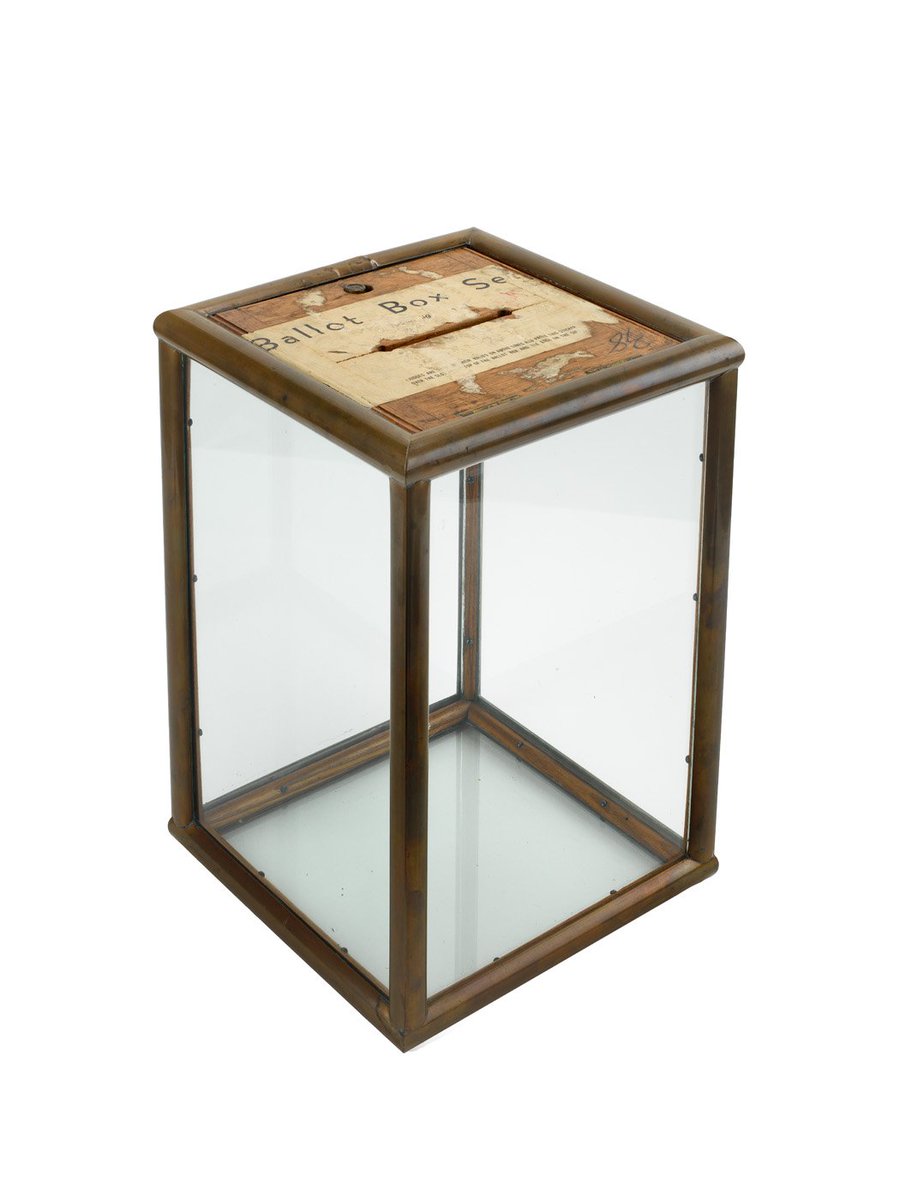
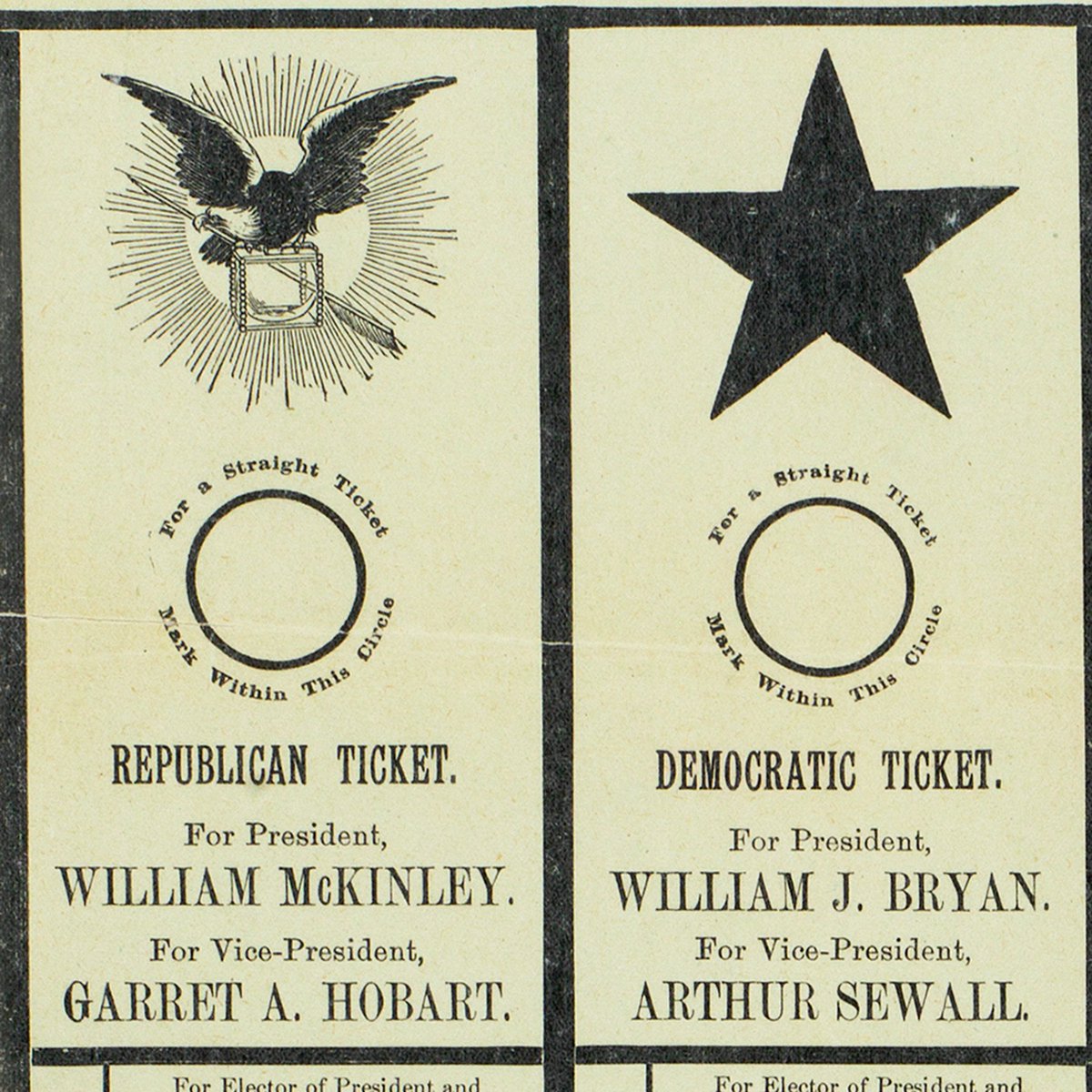
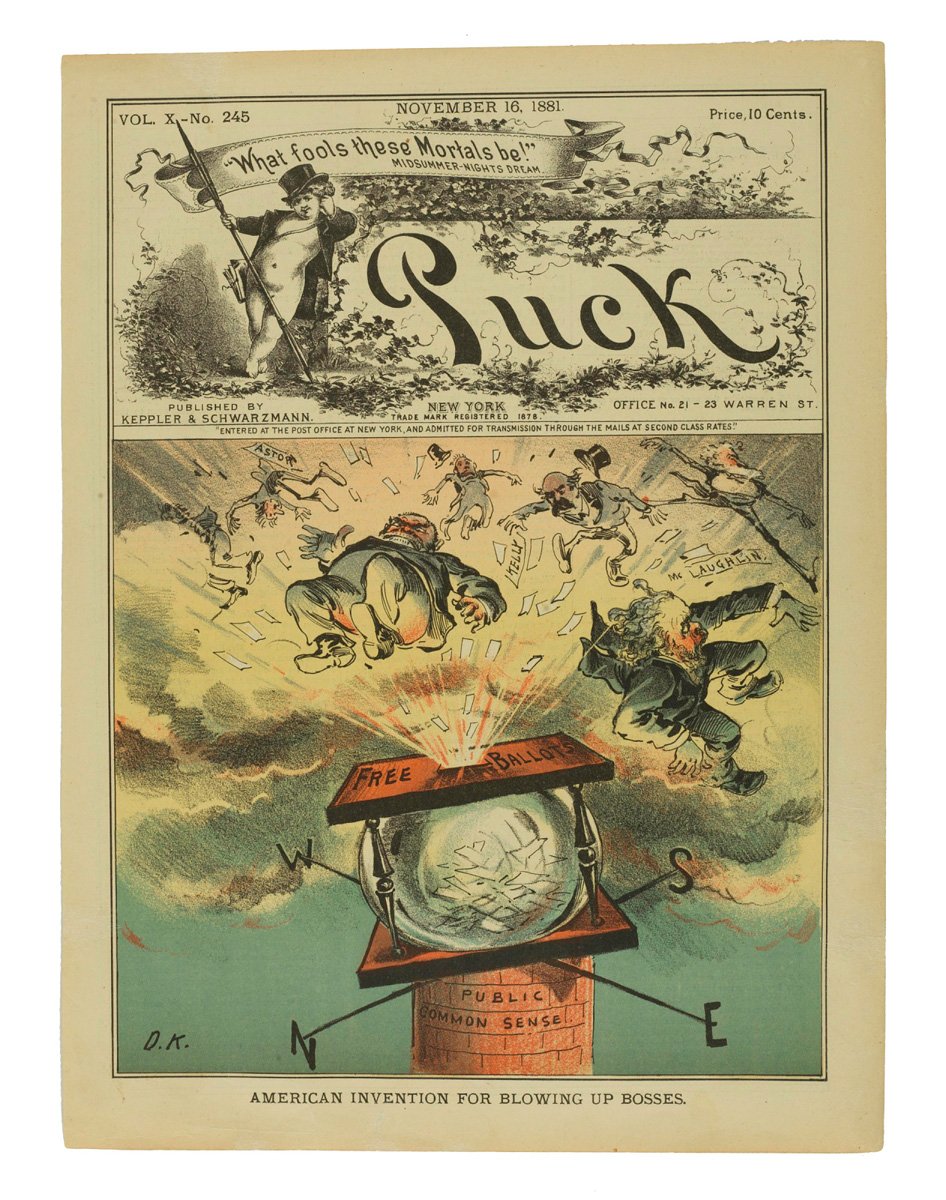
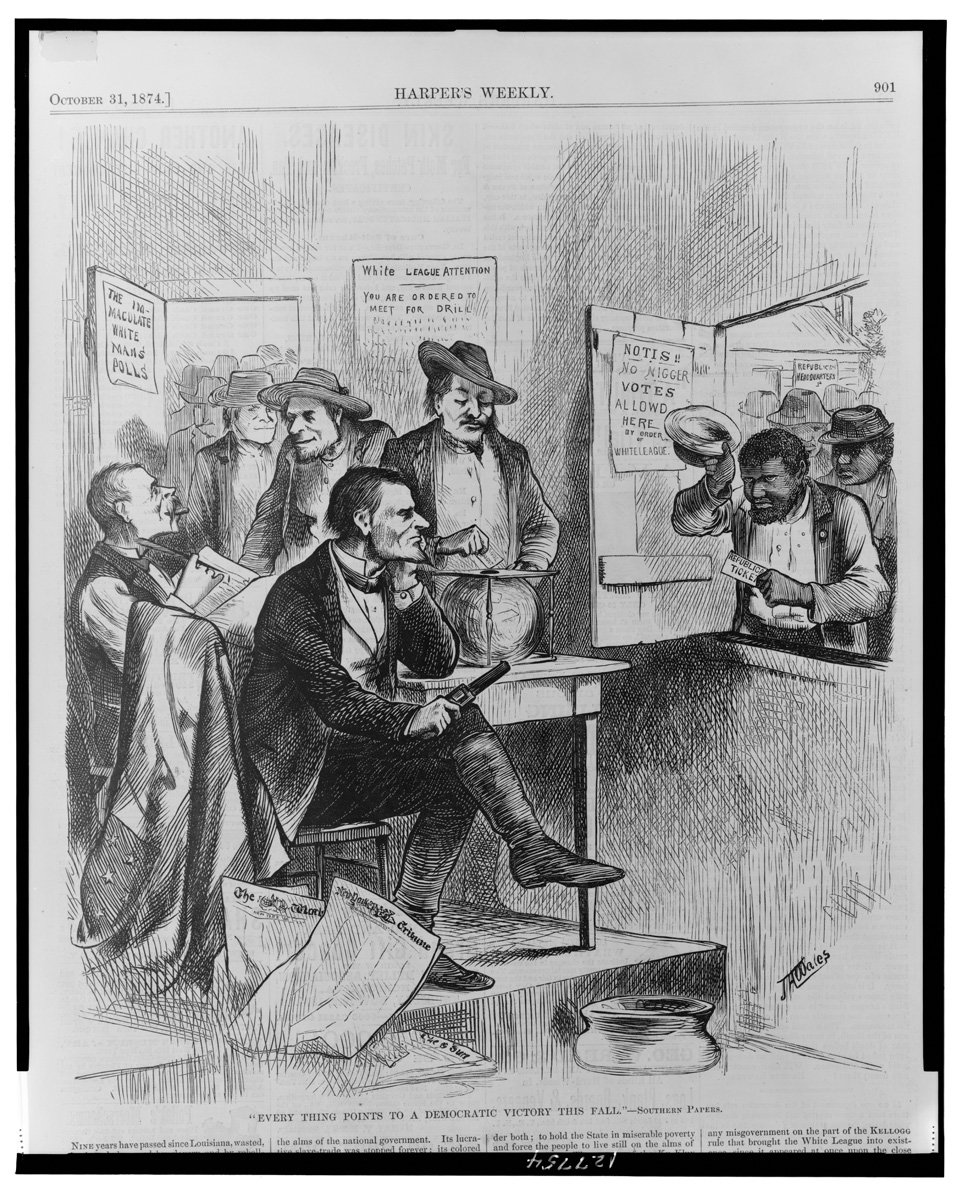 : @librarycongress ]" title="Others were more skeptical about the effect glass ballot boxes would have on elections. This 1874 illustration from Harper& #39;s Weekly reminded readers that new ballot boxes wouldn& #39;t protect voters& #39; from intimidation and violence at the polls. #VoteHistory [https://abs.twimg.com/emoji/v2/... draggable="false" alt="📷" title="Camera" aria-label="Emoji: Camera">: @librarycongress ]" class="img-responsive" style="max-width:100%;"/>
: @librarycongress ]" title="Others were more skeptical about the effect glass ballot boxes would have on elections. This 1874 illustration from Harper& #39;s Weekly reminded readers that new ballot boxes wouldn& #39;t protect voters& #39; from intimidation and violence at the polls. #VoteHistory [https://abs.twimg.com/emoji/v2/... draggable="false" alt="📷" title="Camera" aria-label="Emoji: Camera">: @librarycongress ]" class="img-responsive" style="max-width:100%;"/>

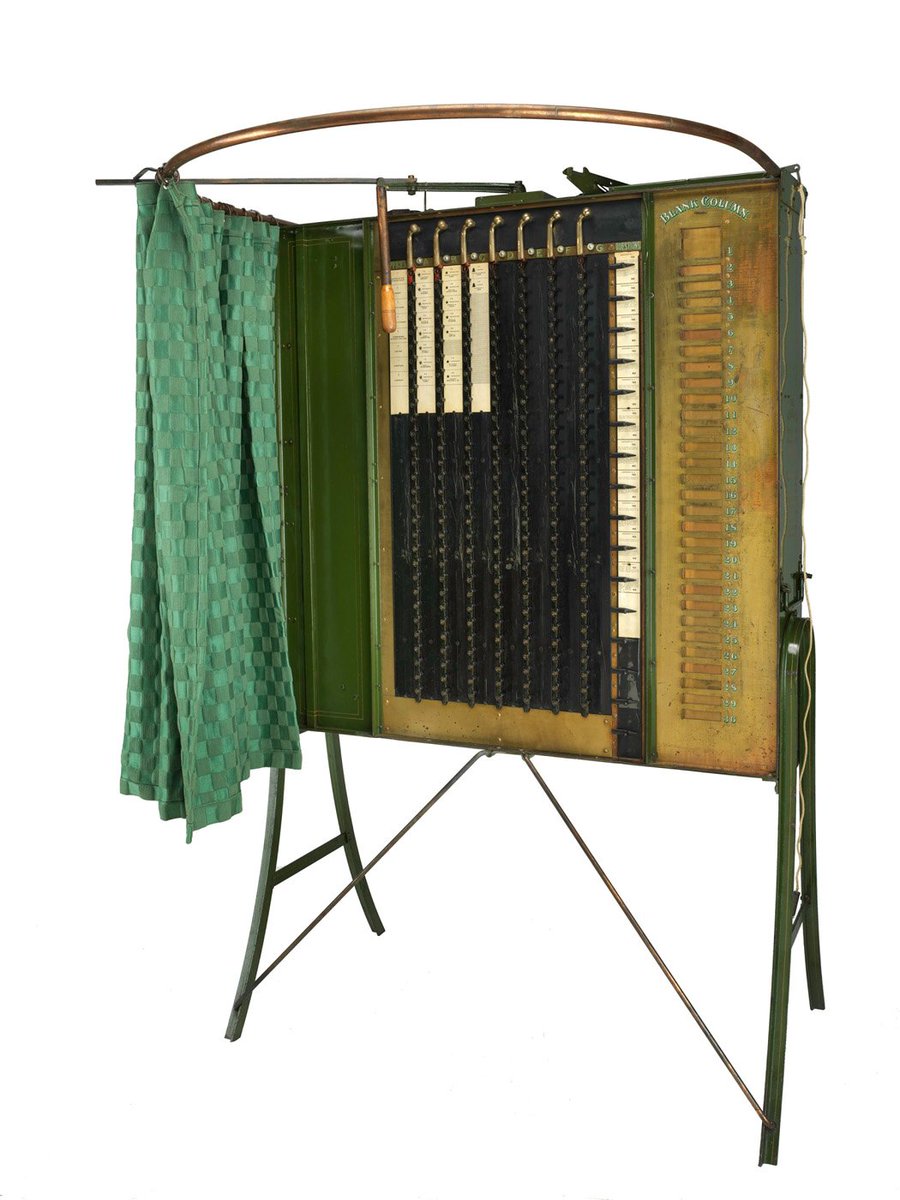

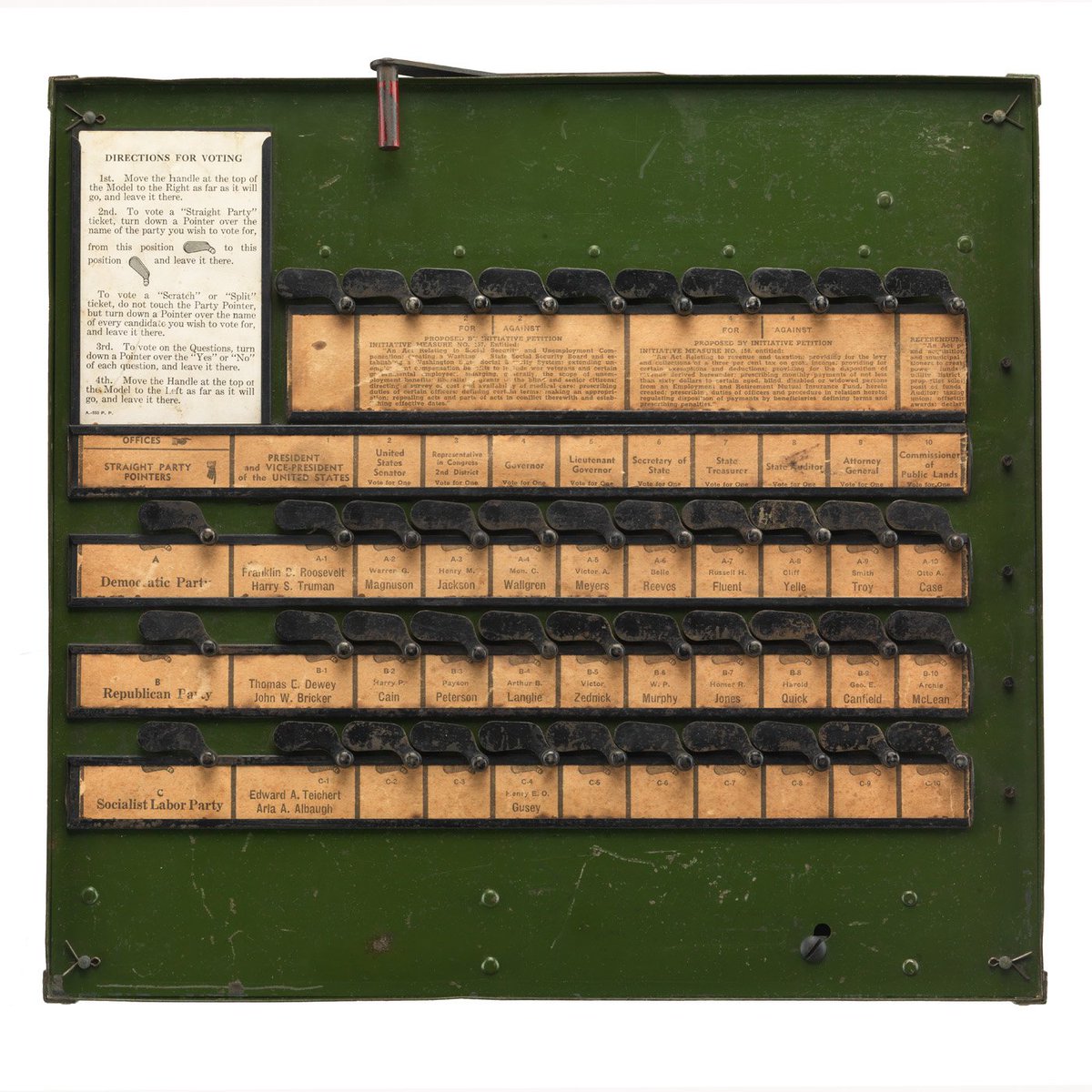
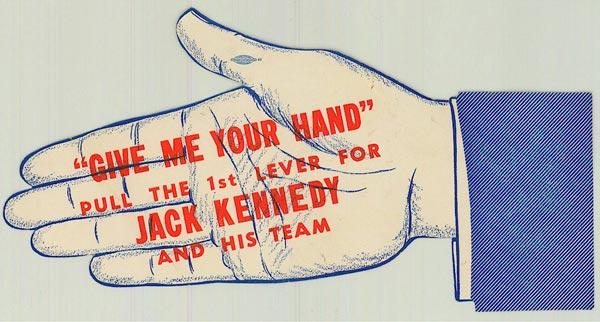 . Political parties encouraged Americans to "pull the lever" for their candidates on election day. Did you ever use one? #VoteHistory" title="By 1960, approximately half of all ballots in the U.S. were cast on gear-and-lever voting machines https://abs.twimg.com/emoji/v2/... draggable="false" alt="⚙️" title="Gear" aria-label="Emoji: Gear">. Political parties encouraged Americans to "pull the lever" for their candidates on election day. Did you ever use one? #VoteHistory" class="img-responsive" style="max-width:100%;"/>
. Political parties encouraged Americans to "pull the lever" for their candidates on election day. Did you ever use one? #VoteHistory" title="By 1960, approximately half of all ballots in the U.S. were cast on gear-and-lever voting machines https://abs.twimg.com/emoji/v2/... draggable="false" alt="⚙️" title="Gear" aria-label="Emoji: Gear">. Political parties encouraged Americans to "pull the lever" for their candidates on election day. Did you ever use one? #VoteHistory" class="img-responsive" style="max-width:100%;"/>
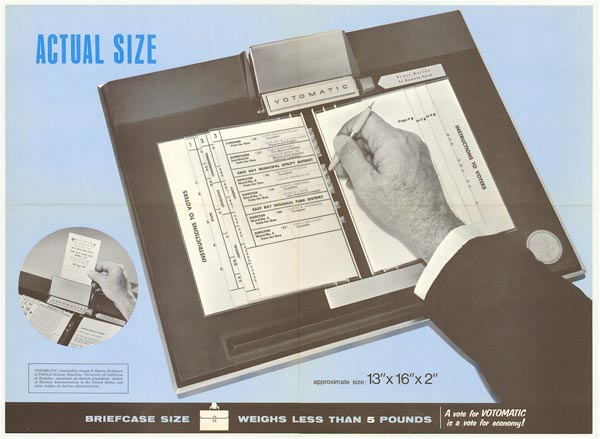
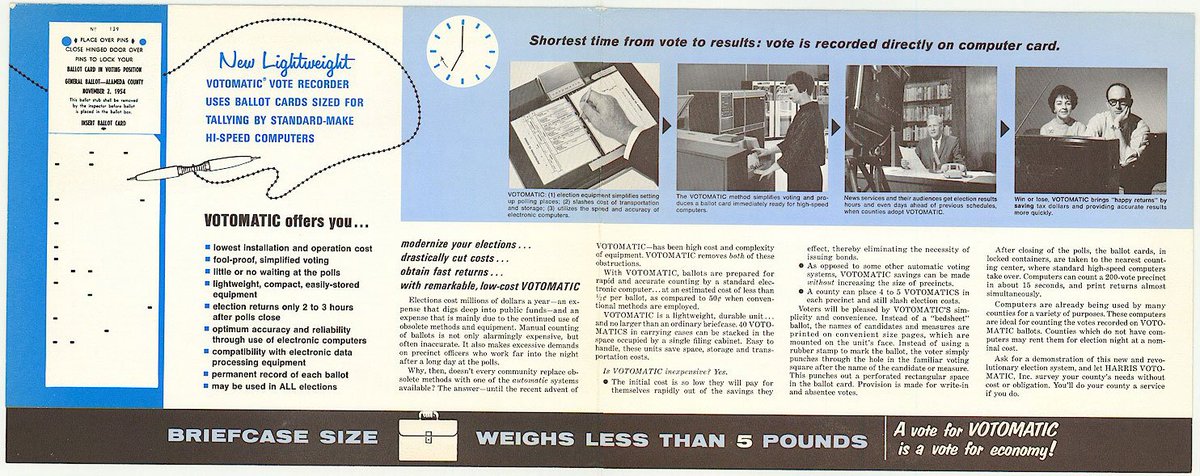
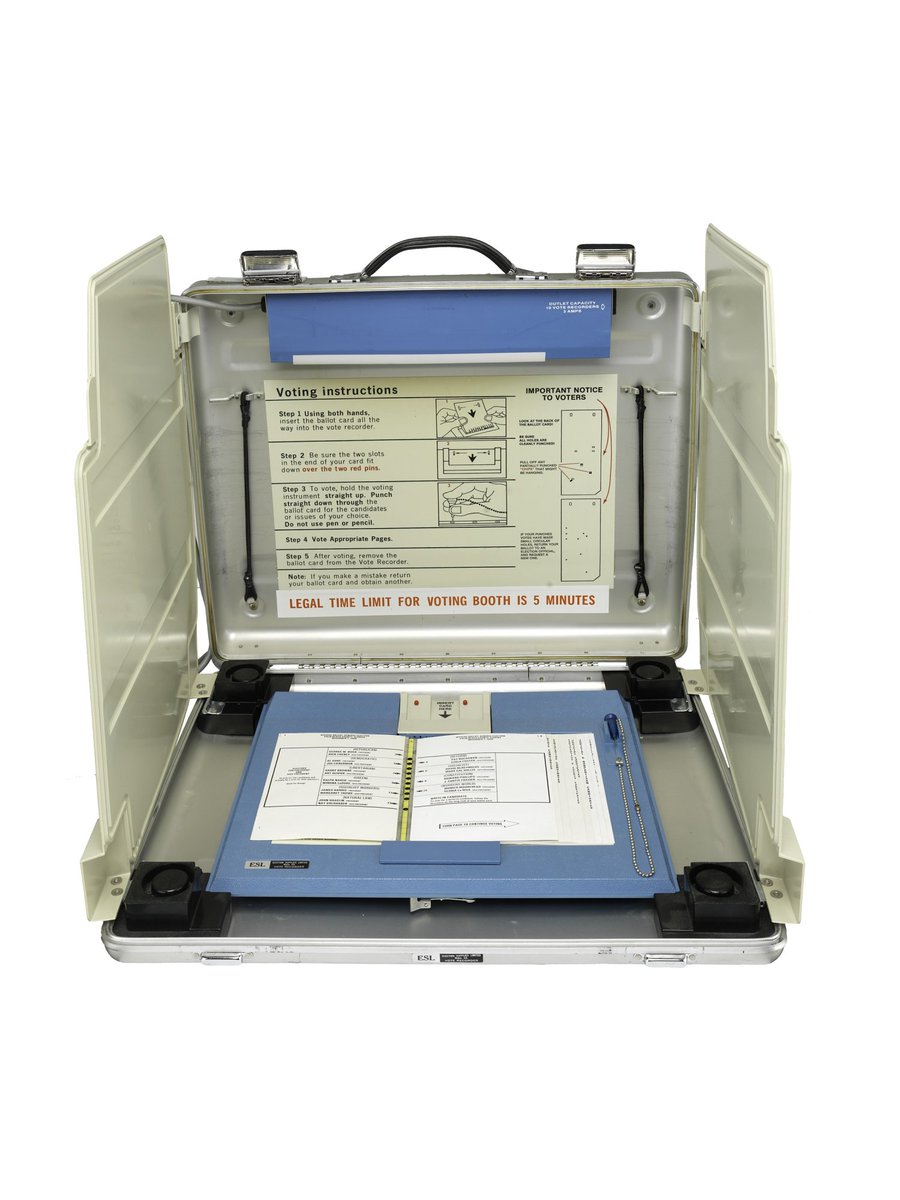 . #VoteHistory" title="On a vote recorder machine, voters insert a machine-readable ballot card into a frame and then use a stylus to punch out "chads"—tiny pieces of paper—on the card. Election officials collect the card and tally the vote later, usually with the help of a computer https://abs.twimg.com/emoji/v2/... draggable="false" alt="🖥️" title="Desktop computer" aria-label="Emoji: Desktop computer">. #VoteHistory" class="img-responsive" style="max-width:100%;"/>
. #VoteHistory" title="On a vote recorder machine, voters insert a machine-readable ballot card into a frame and then use a stylus to punch out "chads"—tiny pieces of paper—on the card. Election officials collect the card and tally the vote later, usually with the help of a computer https://abs.twimg.com/emoji/v2/... draggable="false" alt="🖥️" title="Desktop computer" aria-label="Emoji: Desktop computer">. #VoteHistory" class="img-responsive" style="max-width:100%;"/>


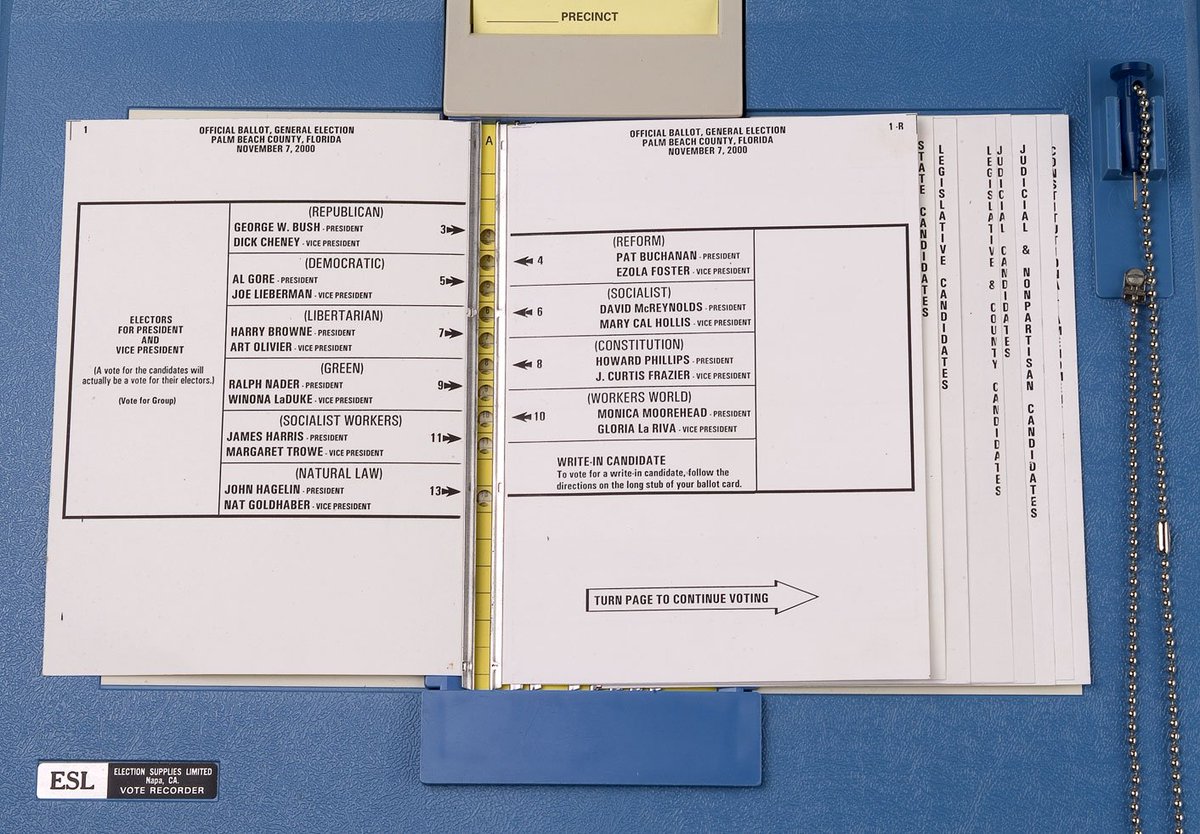
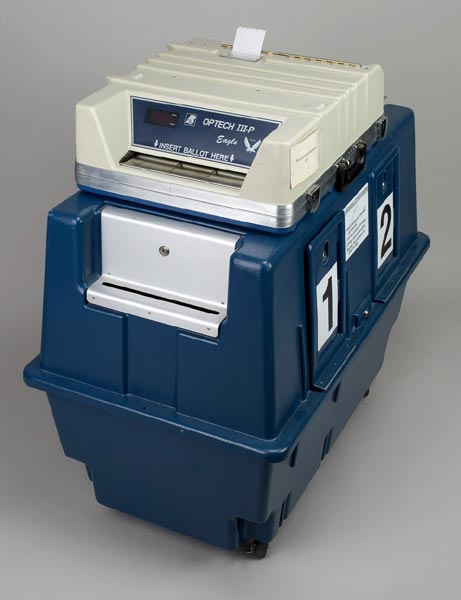
 ? Our exhibition, American Democracy, explores fundamental questions about our nation& #39;s politics, including: How should we govern? Who can vote? How do we protest? Who can be a citizen? What are our rights & responsibilities?: https://s.si.edu/2ON2b8s&q..." title="Enjoy learning #VoteHistoryhttps://abs.twimg.com/emoji/v2/... draggable="false" alt="🗳️" title="Ballot box with ballot" aria-label="Emoji: Ballot box with ballot">? Our exhibition, American Democracy, explores fundamental questions about our nation& #39;s politics, including: How should we govern? Who can vote? How do we protest? Who can be a citizen? What are our rights & responsibilities?: https://s.si.edu/2ON2b8s&q..." class="img-responsive" style="max-width:100%;"/>
? Our exhibition, American Democracy, explores fundamental questions about our nation& #39;s politics, including: How should we govern? Who can vote? How do we protest? Who can be a citizen? What are our rights & responsibilities?: https://s.si.edu/2ON2b8s&q..." title="Enjoy learning #VoteHistoryhttps://abs.twimg.com/emoji/v2/... draggable="false" alt="🗳️" title="Ballot box with ballot" aria-label="Emoji: Ballot box with ballot">? Our exhibition, American Democracy, explores fundamental questions about our nation& #39;s politics, including: How should we govern? Who can vote? How do we protest? Who can be a citizen? What are our rights & responsibilities?: https://s.si.edu/2ON2b8s&q..." class="img-responsive" style="max-width:100%;"/>


